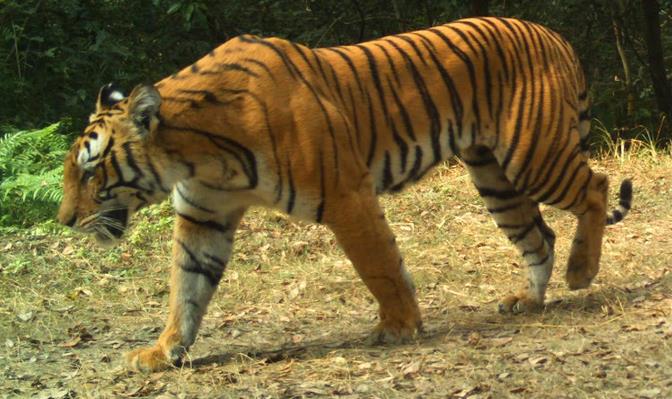Babu Bhattarai
Other projects
11 Nov 2010
Community Outreach Programmes to Lessen Human-Tiger Conflict in Bardia National Park
19 Mar 2015
Assessing Level of Illegal Hunting of Prey Species in Northern Part of Bardia National Park, Nepal: Implication for Carnivore Conservation
Explore the human tiger conflict and associated economic costs to local communities and elicit the willingness to pay of park visitors and business owners to offset the costs of conflict bear by farmers.

Human-tiger conflict (hereafter HTC) is thought to have contributed significantly to the extinctions of three subspecies of tigers (Bali, Javan and Caspian) and has resulted in critically low numbers of extant groups.
In Nepal, dense human population adjacent to key tiger reserves, and the high dependence of local people on natural resources for their livelihoods, have aggravated the problem of HTC. When Nepal achieves the goal of doubling the tiger numbers by 2022, as a result of effective conservation approach, plans and strategies, HTC may likely to escalate. This may intensify negative attitudes towards tigers among local communities which would erode the support of local communities for tiger conservation. Community support for wildlife conservation has been key to Nepal’s success to date. Therefore, addressing HTC and protecting local people is an essential action in the conservation of this endangered and iconic species in Nepal.
Nepal’s economy relies heavily on tourism industry; and wildlife tourism is an important component. However, it is argued that the direct monetary benefits of wildlife conservation are limited to few tourism business owners, while farmers and livestock owners suffer real economic losses linked to successful wildlife conservation. This unequitable sharing of the costs and benefits of wildlife conservation has clear potential as a source of conflict in within affected communities and between human communities and wildlife populations. Such conflict is likely to have negative effects on conservation. Therefore, one of the aims of this this project is to explore and develop mechanisms for sharing the costs and benefits of conservation equitably among stakeholders by eliciting the willingness to pay of tourists and tourism business owners to offset the costs borne by farmers and livestock owners. Additionally, it will assess the actual economic costs of HTC, effect of HTC on tiger conservation and current government approach (policy) to HTC management; and how may it be improved?
This study will be conducted in Bardia and Chitwan National Parks which are located in the lowland of Nepal. These parks protect populations of large carnivores, mega herbivores and various prey species. Major vegetation includes subtropical deciduous forest, riverine forest and alluvial floodplain grass land. The typical household economy of the surrounding communities is subsistence farming and livestock rearing.
This project will examine livestock depredation events which will provide details regarding the types and number of livestock killed by tigers including temporal and spatial characteristics. To estimate the costs of crop loss due to tiger prey species, 24 plots will be established in the vicinity of park boundaries along a distance gradient. Of the 24 plots, 12 will be located within 500 meters of the forest boundary and 12 between 600 m to 1.5 km. The research team will visit these plots weekly. The project aims to collect these data in real time for one year. The actual economic loss due to livestock predation and crop raiding, will be calculated using an average market price obtained from a survey. Perceived losses will be documented via interviews with ~400 local community members.